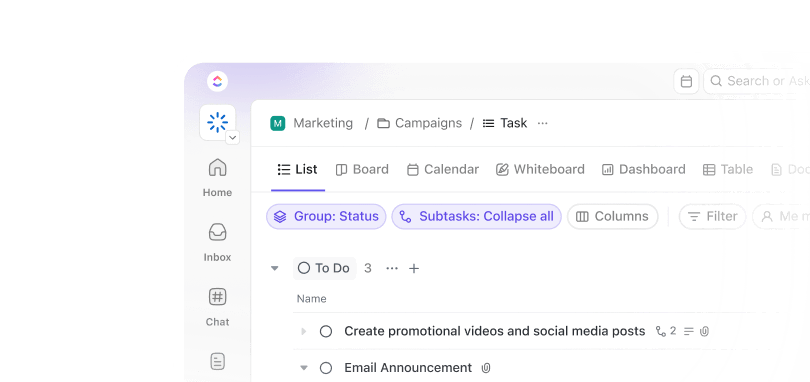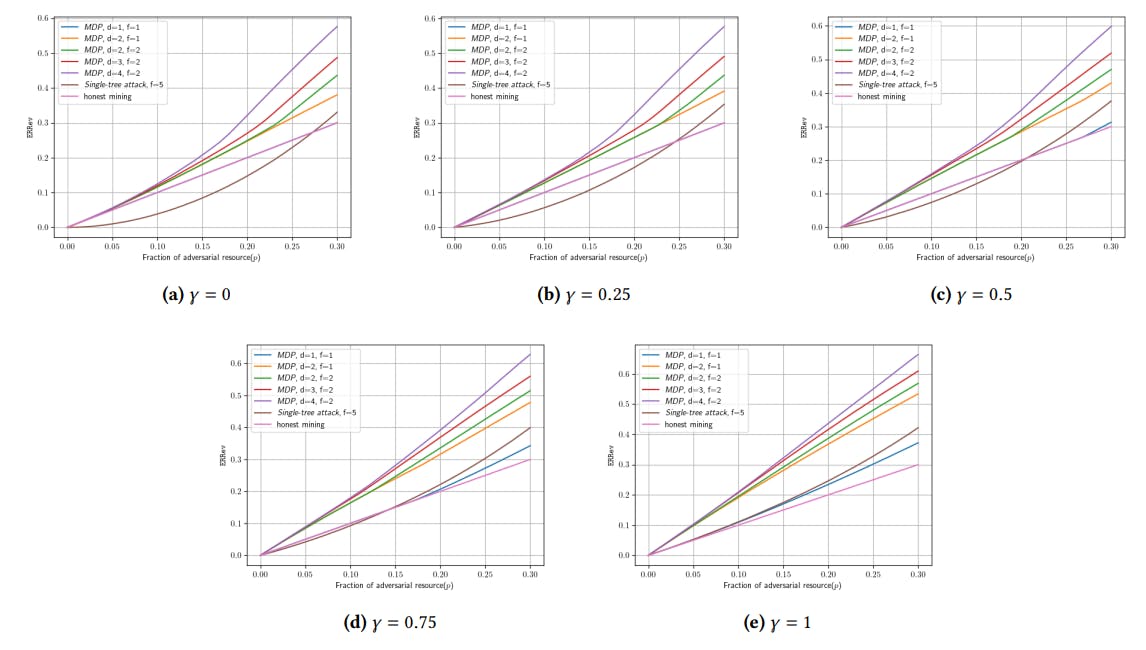Ever tried assembling IKEA furniture without the manual? One minute you’re holding a plank of wood and some screws, and the next, you’ve got a table that looks like it’s doing yoga.
That’s what happens when procedural writing is missing.
Procedural writing is the recipe card that saves your dinner. It’s the user manual that keeps your tech tantrum-free. And it’s the setup guide that gets your project off the ground without a dozen “how do I…” moments.
Whether you’re a professional looking to write instructions that people will actually use or a teacher looking to show students great procedural writing, this piece is for you.
How to Do Procedural Writing the Right Way?
What Is Procedural Writing?
Procedural writing is a type of writing that explains how to do something in a clear, logical, step-by-step format. It guides the reader through a process from start to finish without confusion or guesswork.
Essentially, procedural writing is “how-to” writing. It helps people get things done accurately, independently, and without confusion.
Procedural writing plays a key role in creating effective process documentation and helps readers follow repeatable workflows with consistency. You can use a document containing procedural writing to follow a lab experiment, install an app, or even write a blog post on procedural writing (yes, we’re very meta).
At its core, procedural writing answers three things:
- What you need
- What to do
- What to expect next
Here are some real-world examples of procedural writing you’ll come across 👇
- Math problem-solving guides: Instructions on solving equations using methods like PEMDAS or long division
- Standard operating procedures (SOPs): Detailed SOPs or workflows for recurring tasks like onboarding new employees or processing invoices
- Customer support scripts: Step-by-step troubleshooting guides for solving common issues, like reconnecting a Wi-Fi router
- Recipe cards: Step-by-step instructions for making dishes you’ve been meaning to learn
- DIY furniture manuals: Instructions that help you build a desk, shelf, or nightstand
- How-to blog posts: Think ‘How to clean your coffee machine’ or ‘How to organize your closet in under 30 minutes’
Why Procedural Writing is Crucial for Students
Procedural writing helps train students to think clearly and approach tasks with structure.
Here’s why it matters:
- Builds logical thinking: Writing step-by-step instructions forces students to organize their thoughts sequentially. This strengthens logical reasoning and helps them understand cause and effect, which are key skills in problem-solving, science, and even coding
- Enhances communication clarity: Procedural writing teaches students to be precise and clear. They learn how to cut the fluff and focus on action, clarity, and outcome
- Boosts real-world readiness: From writing lab reports to applying for internships, clear instructions are needed everywhere. Learning how to write them well prepares students for real-life tasks, like filling out forms or even guiding someone through a group project
- Supports independence and confidence: When students write (or follow) procedures correctly, they see results. They’ll be confident of tackling complex tasks on their own, without waiting for someone to explain
💡Pro Tip: Use AI assistants like Brain to create procedural writing documents. Just feed the tool your instructions and voila! Brain users even have the option to choose from multiple AI models, like GPT-4o and Claude, right from their Workspace.

Key Features of Good Procedural Writing
So, what makes procedural writing work? Let’s break down the key features that separate a clear, helpful guide from a confusing mess:
✅ Clear, action-oriented language: Each step starts with a verb (e.g., mix, insert, click). And tell the reader exactly what to do
✅ Logical sequence: Steps are listed in the order they should be performed. But if your reader has to backtrack or guess what comes next, the sequence of your procedural texts needs work
✅ Visual cues (if needed): Bulleted or numbered lists, bolded keywords, graphic organizers, and diagrams/screenshots make the instructions easier to follow, especially for visual learners
✅ List of required materials: A good procedure begins with a ‘What You’ll Need’ section so the reader isn’t caught off guard halfway through. It could be tools, ingredients, or preconditions
✅ Warnings or tips: Great procedural writing anticipates user errors. If there’s a common mistake or tricky part, a quick warning or pro tip goes a long way in helping the reader succeed
✅ Defined outcome: A good procedure explains the expected result: ‘You should now see a confirmation message,’ or ‘The cake is ready when the top is golden brown’. The reader should know if they’ve succeeded
💡 Pro Tip: Use the ‘Inverted Pyramid’ technique for each procedural step. Start with the essential action command, follow with clarifying details, and end with rationale or context. Your reader must be able to scan for key actions with the supporting information.
To save time, use the Pyramid Whiteboard Template for organizing ideas into pyramid structures for quick comprehension of topic clusters.
How to Teach Procedural Writing in Your Classroom
Procedural writing lessons help your students communicate effectively. If you’re planning to teach how to write in a practical, real-world way, this section breaks it down into clear steps.
Step 1: Introduce the purpose of procedural writing
Before students can write strong procedures, they need to understand why procedural writing matters. In the classroom:
- Begin with a relatable scenario: Ask: ‘Imagine you’re out sick and a friend needs to take your place in a science experiment. Could they do it just by reading your instructions?’ When you introduce procedural writing, you must encourage them to think about the clarity of thought for the reader
- Show a side-by-side comparison: On the whiteboard, compare and contrast your own procedural writing. Let your students spot what’s missing, confusing, or helpful
❌ The instruction ‘Add vinegar into the beaker’ would be vague.
✅ A clear one looks like ‘Measure 10ml of vinegar using a measuring cylinder. Pour it into the beaker marked A.’
Once students have this baseline, you can turn the lesson into a dynamic, referenceable learning asset using Docs—a flexible, collaborative space within , the everything app for work.


Here’s how to use Docs as a collaborative space for your students:
- Create a central class Doc titled ‘What Is Procedural Writing?’ Use headers like Why It Matters, Key Features, and Example vs Non-Example. This becomes your go-to explainer that students can revisit anytime
- Use toggle lists and callouts to make the Doc interactive. Add collapsible sections for definitions, and use callout blocks for teacher tips or reminders
- Embed media for richer learning. Insert a short demo video (e.g., a screen recording of logging into a tool) or upload a PDF with a well-written sample procedure for reference
- Track engagement and updates in one place. As each grade student submits their first procedural writing ideas or reflections, you can keep versions and feedback centralized in the same Doc
Next, turn the lesson into a dynamic, referenceable learning asset or build a procedural writing unit using Docs as your central hub.
📮 Insight: 92% of knowledge workers risk losing important decisions scattered across chat, email, and spreadsheets.
Without a unified system for capturing and tracking decisions, critical business insights get lost in the digital noise. With ’s Task Management capabilities, you never have to worry about this. Create tasks from chat, task comments, docs, and emails with a single click!
Step 2: Teach structure and language
After students understand the why, it’s time to show them how to structure their procedural writing clearly and logically.
- Teach the core structure: Dissect procedural writing with core elements like, Title, Materials/Requirements, Numbered steps, and Expected outcome
- Use of transition words: Your instructions must be easy to follow. To explain cause and effect, use phrases such as because, so that, or therefore. Present variations with if desired, or alternatively. Finally, use cautionary transitions like however, note, or otherwise to highlight warnings and avoid errors
- Emphasize clarity through action verbs: List strong verbs on the board (mix, insert, identify) and show how they guide the reader more effectively than vague ones like do or get
- Assign a short task: Have students write a procedure for something school-related, like citing a source or creating a PowerPoint or Google Slides, using the structure and verbs just taught
makes this structure easy to follow and track through Tasks.


At a glance:
- Create a main Task for ‘Write Your Procedure’
- Add nested Subtasks for each component: title, materials, steps, outcome
- Use Custom Fields to track clarity (e.g., “Uses Action Verbs?” ✅/❌)
- Attach the reference Doc from Step 1 so students stay aligned
- Let students update task statuses like ‘In Progress’ or ‘Ready for Review’ to manage their workflow
To make it easier to understand, use the SOP Template.
Here’s what it gives your students:
- With this SOP template, students can visually see how the procedure is broken into Purpose, Scope, and Procedure. This mirrors how they should structure their own writing
- The use of numbered steps, bullet points, and embedded visuals sets a standard for clarity, readability, and user-first writing
- Built-in headings like ‘Review & Revision’ encourage students to think about finalizing and improving their writing
Step 3: Assign practice tasks
Once students understand the structure, it’s time to put it into practice. Writing is a skill they learn by doing so your goal here is to give them relevant instruction manuals that they can then use to craft instructions. This involves:
- Start with a task tied to their subjects: They must write a procedure for something they do in school, like setting up a lab experiment, solving a math equation, or preparing a presentation
- Encourage peer clarity: Remind them that if someone else can’t follow their steps without help, it’s not clear enough. And you can even have classmates test each other’s procedural text and give feedback
- Set clear success criteria: They must include all four core elements: a title, a list of materials, numbered steps, and an expected outcome. Give them a checklist to self-assess before submission
To save time, use ’s Knowledge Manager to understand and track work automatically. In a nutshell:
- Store each student’s procedural writing in the Knowledge Base: You can organize them by class, topic, or status (e.g., Drafts, Peer Reviewed, Final Submissions)
- Use AI to surface missing elements: Brain can scan Docs for structural gaps, like missing materials or unclear sequencing, so you can give faster, more specific feedback without reading every line manually
- Make peer review efficient and targeted: Assign peer review Docs and let Brain highlight parts where the writer was unclear or used vague language, giving students a head start on where to focus their feedback


Step 4: Support peer review and collaboration
Like everything else, procedural writing isn’t complete until it’s tested. Peer review helps students see how their writing performs in real-world conditions—can someone else follow it without asking for help?
Here’s what you can do to support peer review and collaboration:
- Pair students up for testing: Each student reads their partner’s procedure and tries to follow it step-by-step. If they get stuck, they note where and why
- Introduce a feedback format: Use simple, structured prompts like:
- “I got confused at step ___ because…”
- “I think you could be more specific about…”
- “This step worked really well because…”
- Reinforce the revision mindset: Make it clear that feedback isn’t part of the writing process. After the review, students revise their procedures based on what their partner pointed out
- Take it to the next level with group work: Once students are confident, move on to collaborative writing. Ask groups to write a more complex procedure, like planning a class event or prepping a science fair exhibit
💡 Pro Tip: Use Whiteboards for collaborative planning during creative writing. Before students begin writing as a group, have them map out each step visually on a Whiteboard using sticky notes. They can color-code, assign parts, and even link to Docs or Tasks, all in one space. It’s a simple way to make teamwork more organized and transparent.
Step 5: Track progress and grow
At this point, shift the focus from correction to growth. Instead of just fixing what’s wrong, encourage students to level up their writing.
- Challenge young writers to revise with a new reader in mind (e.g., a younger student or someone outside their subject)
- Ask them to rewrite their steps more concisely (clear doesn’t mean long)
- Can they convert it into opinion writing?
- Do they have clarity in the difference between informational writing, expository writing, and procedural writing?
- Have them swap final versions and identify one strength in each other’s writing
Encourage them to keep a ‘writing wins’ list, i.e., things they improved on from draft to final
When you teach procedural writing, this is the stage where students move from following a structure to owning it.
⌛Time-saver: Looking to enhance your procedural writing over time? These process improvement templates can help you document feedback, spot gaps, and improve clarity with every revision.
Engaging Activities to Reinforce Procedural Writing
Here’s how you can make the procedural writing fun and effective rather than being stiff and formulaic.
1. Reverse engineer a finished product
Start with a finished product—maybe a folded paper airplane, a sandwich, or a basic app setup. Try writing the instructions that someone would need to recreate it from scratch. You’ll have to slow down and think about every small move.
2. Write and swap
Think of a task you know well, like updating a phone setting or brewing coffee with a French press. Write out the steps, then hand them off to someone unfamiliar with the task. But don’t explain anything—simply observe.
If they fumble, skip something, or keep glancing at you for help, those are the weak spots in your writing. Since you have prior knowledge, you may skip tasks that someone else might need help with.
3. Set the clock
When writing pieces, time the process. It forces you to focus on what matters and get straight to the point.
4. Rescue bad instructions
Rewrite a confusing tutorial or a poorly written manual. The aim here is to learn how to rescue poorly written procedural texts by spotting gaps, unclear instructions, and awkward structure.
5. Map it out visually
Pick a task that involves multiple paths or choices, like setting up an email filter or assembling a piece of furniture. And instead of writing it as a step-by-step how-to guide, you can convert it into a flowchart.
By mapping out each decision and outcome, you’ll start thinking more clearly about structure and sequence. This kind of visual planning sharpens your ability to organize steps in a way that makes your procedural writing easier to follow.
Key Tips for Effective Procedural Writing Instruction
1. Turn your task into a voice-over
Record yourself doing the task using the manual. You can convert it into a voiceover script that guides a first-grade student through the task. Language features like voiceover help you get a feel for pacing, word choice, and clarity, all while connecting your writing to real actions.
2. Keep a quick-check reference nearby
While writing, have a checklist so that your instructions are clear and actionable.
Here’s a checklist that you can follow to keep your writing focused and easy to follow:
- Are the steps in a logical order?
- Are action verbs clear and specific?
- Have I included all necessary details (e.g., tools, settings)?
- Is the language simple and direct?
- Are the steps numbered or listed consistently?
- Did I account for any potential obstacles or challenges?
- Have I included visuals (e.g., screenshots or diagrams) where needed?
3. Prioritize actions, not explanations
You must focus on guiding the reader through tasks. Excessive background information can slow down the process. Keep explanations brief and actionable.
❌ Detailing the history of a software update
✅ This update improves security and fixes bugs. Follow the steps below to install it
Common Mistakes to Avoid in Procedural Writing
1. Skipping crucial steps
Nothing disrupts the flow of a task more than missing an essential step. You might think the reader will know what to do next, but assumptions in any form of expository writing lead to gaps in your instructions.
✅ Solution: Let your peers read through your instructions as if you’re the one following them. If something feels incomplete or unclear, add in the missing details.
2. Using vague language
Procedural writing thrives on clarity, precision, and repeatability, so vague terms are the enemy.
And for this, use the vague language editing checklist.
| Check for | Mistakes to avoid | How to fix it |
| Subjective adverbs | “Do it carefully” | Be specific: “Tighten the bolt until snug, not forced” |
| Relative time words | “Wait a bit” or “Quickly mix” | Use measurable time: “Wait 30 seconds” or “Stir for 2 minutes” |
| Imprecise correctness terms | “Do it properly” / “Correctly” | Spell it out: “Align the edges before gluing” |
| Incomplete item lists | “etc.” / “and so on” | Fully list or use: “Repeat for each section below” |
3. Overloading the instructions with information
When you’re trying to be thorough, you may be tempted to include everything. Background info, unrelated steps, or extra examples that pull attention away from the actual task. It could do more harm by overwhelming the reader and making the process harder to follow.
✅ Solution: Stick to the essentials. If a detail doesn’t directly help someone complete the task, leave it out. Make every step purposeful and easy to act on.
4. Using inconsistent formatting
If your formatting changes from one step to the next, it becomes harder for your reader to follow along. Switching between numbered lists, bullets, and different fonts or styles can make your instructions feel disorganized. Even clear content gets lost in a messy layout.
✅ Solution: Standardizing formatting is as important as content clarity. Process standardization helps reduce confusion and keeps workflows efficient.
5. Being too formal or academic
Procedural writing isn’t a research paper. If you write too formally, your instructions can come off stiff or confusing.
✅ Solution: Use plain, direct language. Say ‘Click the blue button’ instead of ‘Initiate the process by selecting the appropriate interface option.’
Streamline Your Procedural Writing with
Effective procedural writing is all about clarity and structure. By focusing on action-oriented language, logical sequencing, and providing the right context, you ensure that your readers can follow instructions with ease.
offers a comprehensive suite of tools to streamline your procedural writing process. With Docs, you can easily create clear and organized procedural writing materials that you can refer back to anytime.
Whiteboard helps you visualize complex processes or ideas, making them easier to understand and follow. Lastly, Knowledge Manager keeps all your documents and tasks easily accessible and up to date, ensuring you always have the latest information at your fingertips.
Try for free to start creating your procedural writing manuals.


Everything you need to stay organized and get work done.














